Bridging RAG and Search to Dominate Rankings
Think SEO is dead? Think again. AI just crashed the party, and it’s rewriting the rulebook for dominating search rankings—are you ready to play catch-up?

In a world where 90% of online experiences begin with a search, why do so many businesses still rely on outdated SEO tactics? The AI revolution changes everything—are you ready?
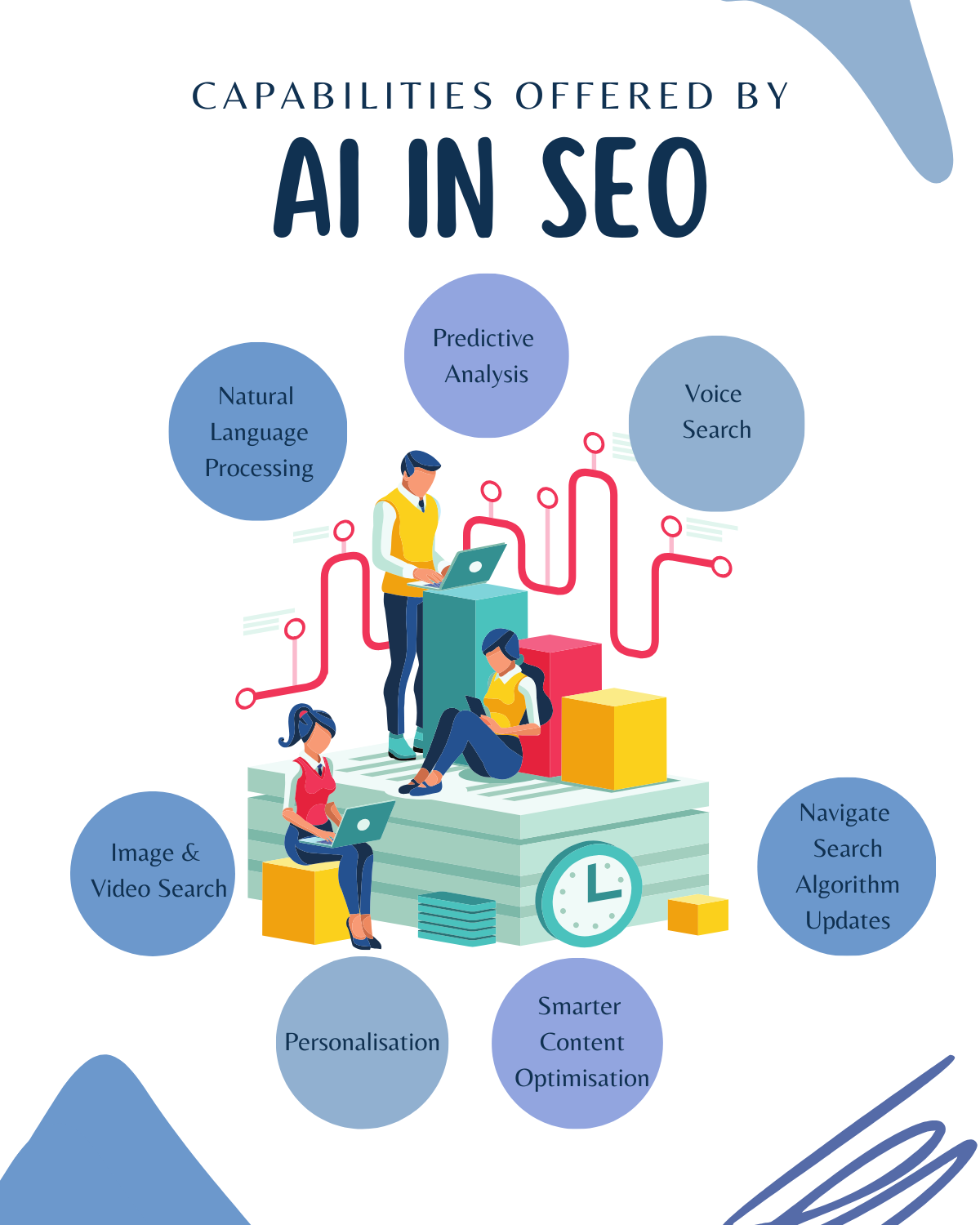
The Intersection of AI and Search Technologies
AI’s ability to analyze multimedia content—identifying objects, emotions, and scenes—redefines search. For instance, Bing’s AI-driven multimedia indexing delivers richer, highly relevant results, enhancing user engagement.
Understanding the Importance of Search Rankings
Search rankings now influence AI-driven decisions, from product recommendations to voice assistant responses. Prioritizing authority-building content ensures visibility in AI-overviews, driving trust and conversions.
Evolution of Search Algorithms and AI Integration
AI-driven algorithms now decode intent over keywords. For example, Google’s BERT model enhances semantic understanding, enabling nuanced results. This shift demands content tailored to user context, not just queries.
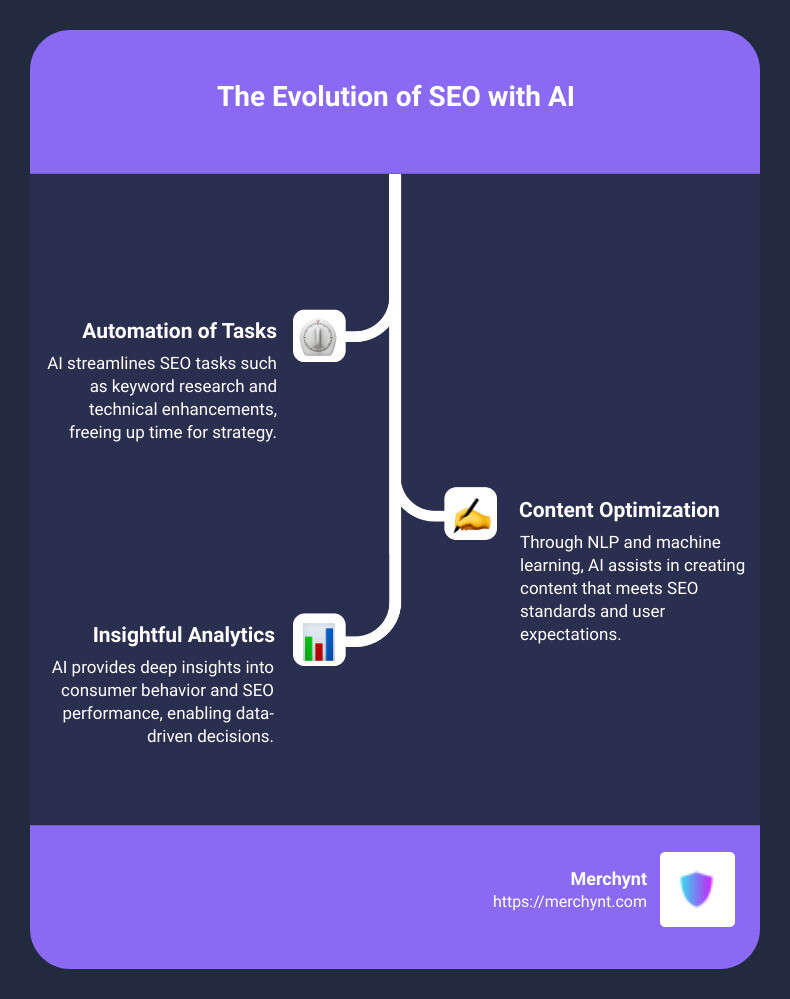
From Traditional Algorithms to Machine Learning Models
Machine learning models, like RankBrain, adapt dynamically to user behavior. Unlike static algorithms, they refine results in real-time, leveraging contextual learning to predict intent and improve accuracy.
How AI Has Transformed Search Engine Optimization
AI enables hyper-personalization by analyzing user behavior, location, and preferences. For instance, personalized search results boost engagement, requiring businesses to craft audience-specific, intent-driven content for competitive visibility.
Core AI Concepts Impacting Search Rankings
AI-driven semantic search deciphers intent beyond keywords. For example, Google’s BERT model interprets nuanced queries, emphasizing contextual relevance. Businesses must prioritize clear, authoritative content to align with these advancements.
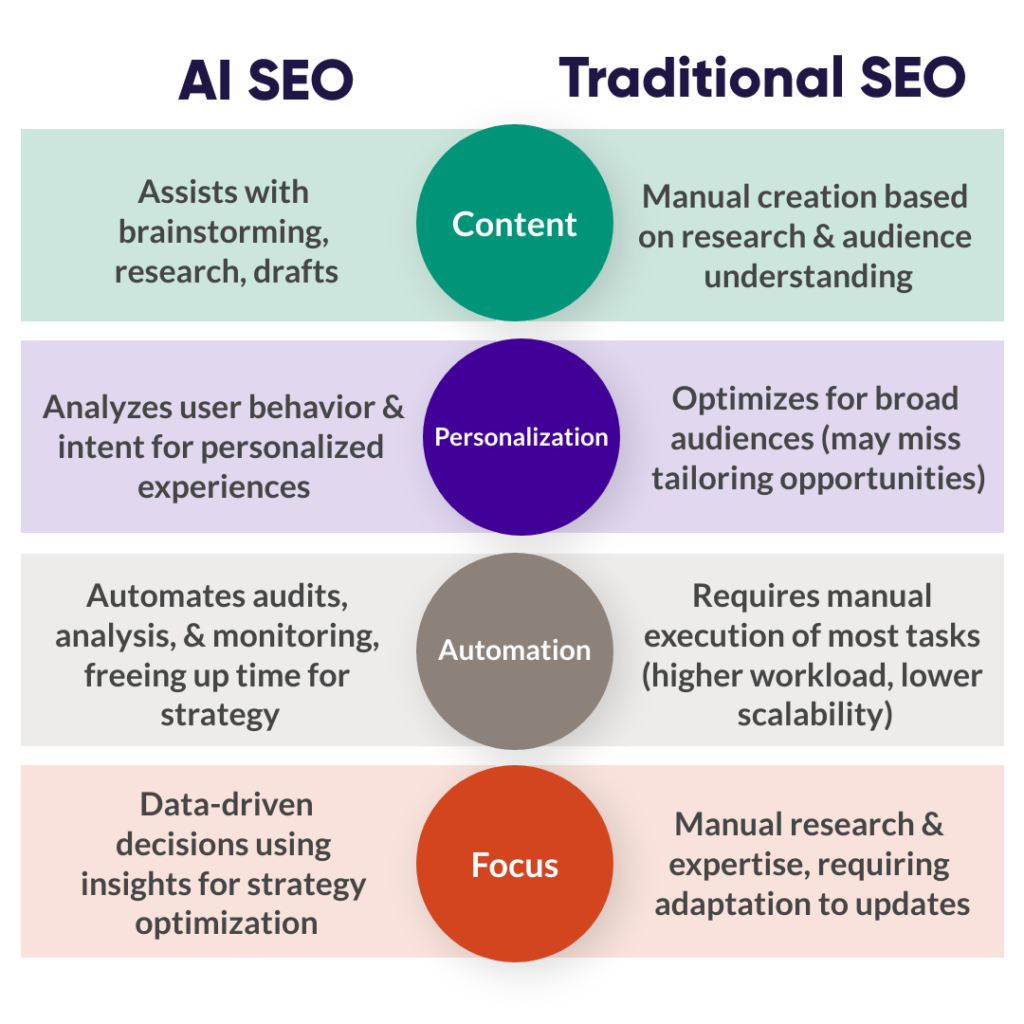
Machine Learning and Ranking Factors
Machine learning refines rankings by analyzing engagement metrics like dwell time. For example, RankBrain adjusts SERPs dynamically, urging businesses to optimize content for sustained user interaction.
Natural Language Processing in Content Analysis
NLP deciphers contextual intent, enabling search engines to rank nuanced content. For instance, Google’s BERT prioritizes relevance over keywords, pushing businesses to craft conversational, user-focused narratives for better visibility.
Deep Learning for User Behavior Prediction
Deep learning models, like RNNs, analyze sequential user actions to predict intent. For example, Netflix’s recommendation engine uses similar techniques, inspiring SEO strategies to anticipate search trends effectively.
Implementing AI in SEO Strategies
AI transforms SEO by automating tasks like keyword research and content optimization. Tools like SEMrush use predictive analytics, enabling marketers to adapt strategies dynamically, ensuring relevance and competitive advantage.
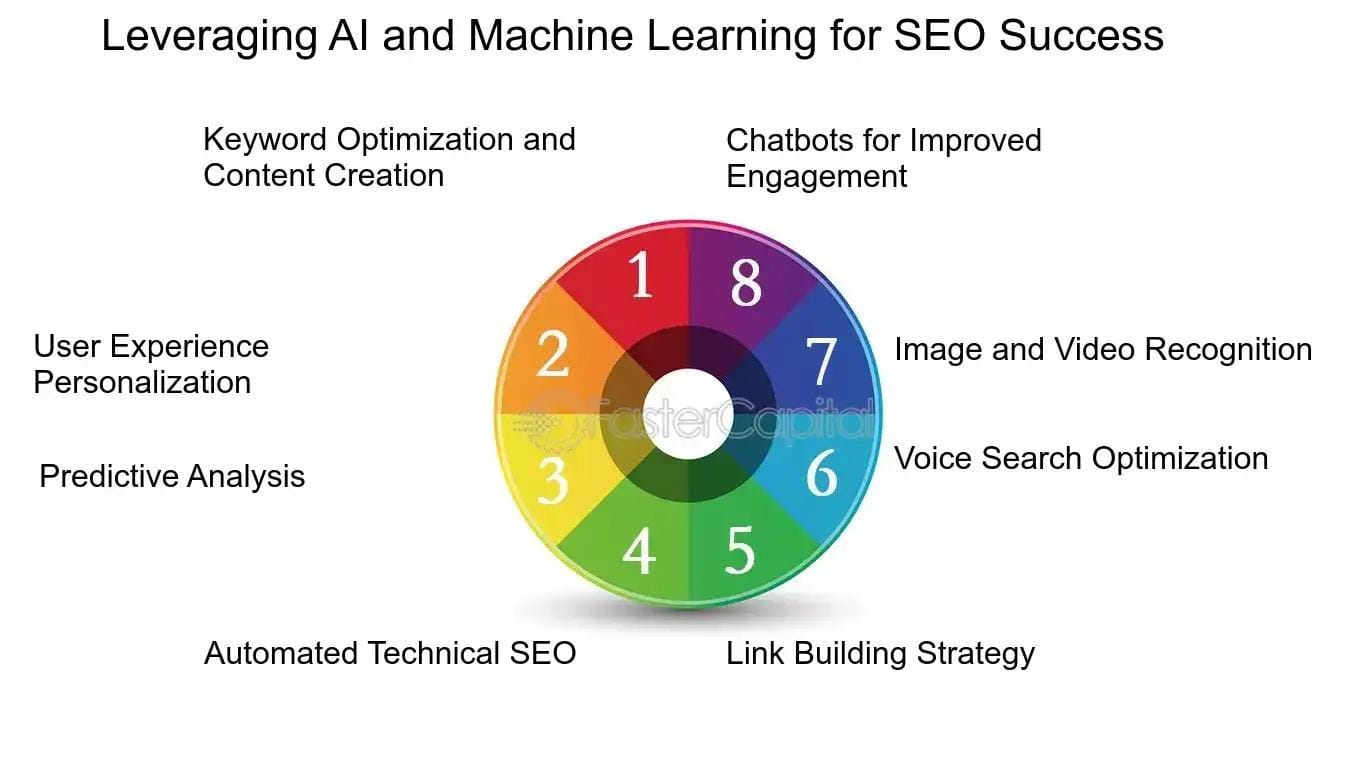
Leveraging AI for Keyword Research and Selection
AI tools like Clearscope use NLP to identify semantic keyword clusters, aligning content with user intent. This approach boosts relevance, reduces guesswork, and uncovers untapped long-tail opportunities.
Optimizing Content with AI-Driven Insights
AI tools like Surfer SEO analyze top-performing pages, offering actionable recommendations on structure, readability, and keyword density. This ensures content aligns with user intent and search engine algorithms effectively.
Automating SEO Tasks Using AI Tools
AI tools like AlliAI automate technical audits, identifying broken links, optimizing metadata, and improving site speed. This streamlines workflows, reduces manual errors, and enhances overall SEO efficiency.
Advanced AI Applications in Search
AI-powered visual search, like Google Lens, transforms user experience by interpreting images as queries. This bridges gaps in accessibility, enabling seamless discovery and redefining traditional text-based search paradigms.

Personalization and Predictive Search
AI-driven predictive search anticipates user needs by analyzing behavior patterns. For example, Netflix’s recommendation engine boosts engagement by tailoring content, showcasing AI’s potential in hyper-personalized search experiences.
Voice Search Optimization with AI
AI refines voice search by analyzing conversational patterns. For instance, using structured data and long-tail keywords ensures content aligns with natural speech, enhancing visibility in voice-driven queries.
Image and Video Search Enhancement
AI-powered contextual tagging analyzes objects, emotions, and scenes in visuals. For example, travel blogs using AI-driven insights can prioritize high-engagement imagery, boosting relevance and audience connection.
Case Studies: Success Stories of AI in Dominating Rankings
A regional bank increased account openings by 65% using AI-driven Google Ads optimization. AI identified high-conversion keywords, refining targeting and boosting ROI through predictive analytics.
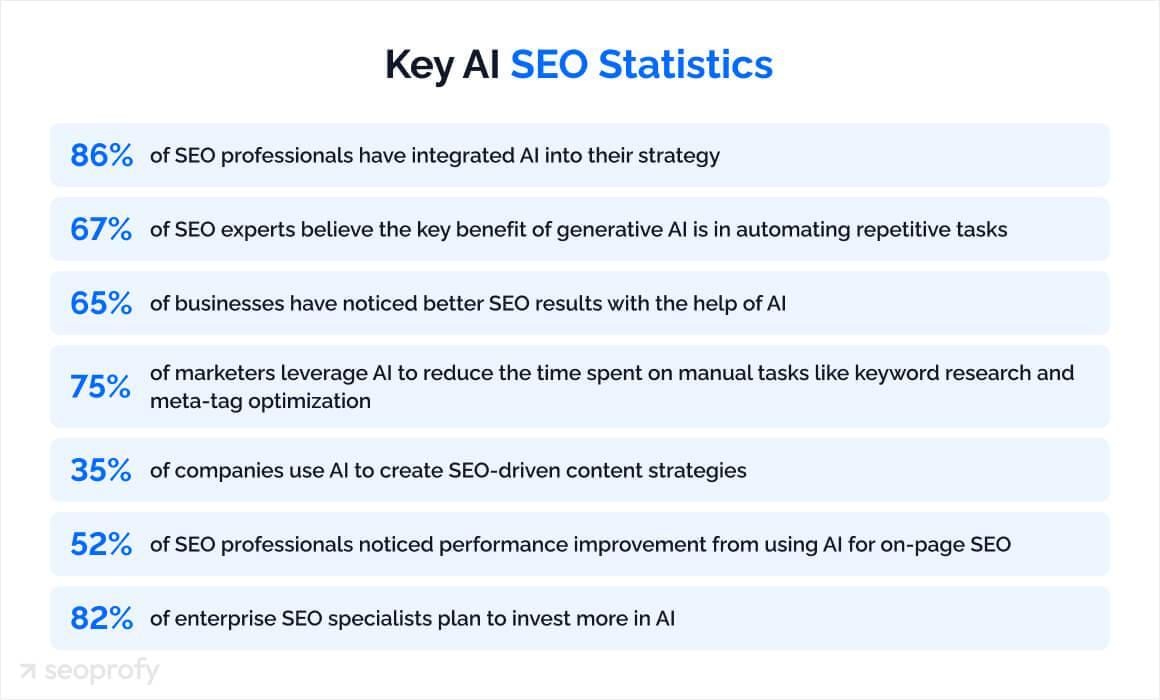
Enterprise-Level AI SEO Implementations
Global e-commerce brands leverage AI-driven dynamic content optimization, tailoring product pages in real-time based on user behavior. This approach boosts conversions, reduces bounce rates, and aligns with predictive consumer trends.
SMBs Leveraging AI for Competitive Advantage
Small businesses use AI-powered competitor analysis tools to uncover untapped keyword opportunities. By targeting niche markets, they outperform larger rivals, achieving higher visibility with minimal budgets and tailored content strategies.
Innovations from AI-First Companies
AI-first companies harness generative AI for hyper-personalized marketing, creating dynamic ad campaigns tailored to individual preferences. This strategy enhances engagement, maximizes ROI, and sets new benchmarks for customer-centric content.
Challenges and Ethical Considerations
AI-driven search faces bias risks, as algorithms reflect training data flaws. For example, biased datasets skew rankings, demanding rigorous audits, diverse inputs, and transparent practices to ensure fairness and accountability.
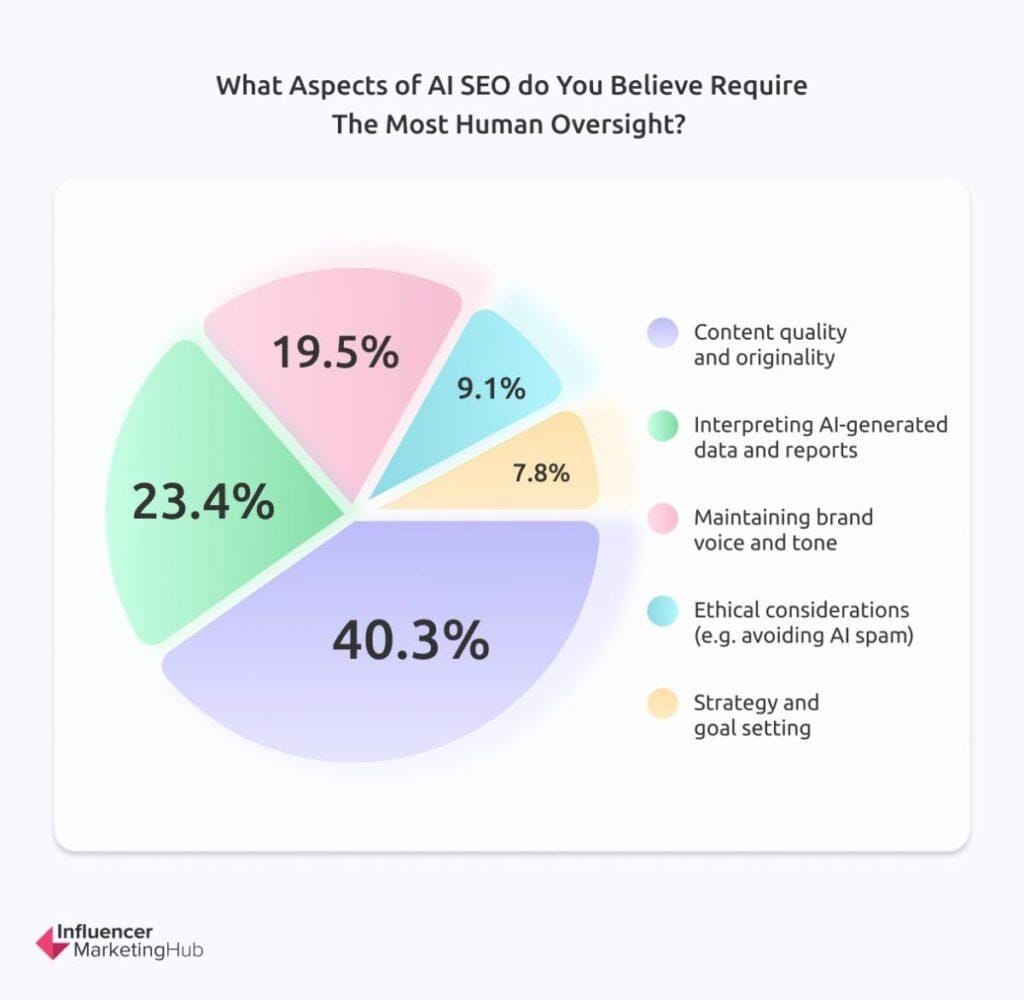
Data Privacy Concerns with AI in Search
AI’s reliance on behavioral data raises privacy risks, such as unauthorized profiling. Implementing federated learning minimizes data exposure, balancing personalization with compliance to privacy regulations like GDPR.
Addressing Algorithmic Bias and Fairness
In-processing techniques, like fairness constraints during training, reduce bias without sacrificing accuracy. For instance, Google’s “What-If” tool visualizes bias impacts, enabling proactive adjustments for equitable search outcomes.
Regulatory Compliance and AI Usage
Adopting algorithmic impact assessments ensures compliance by identifying risks early. For example, healthcare AI systems align with GDPR through transparent data handling, fostering trust and reducing legal vulnerabilities.
Future Trends and Emerging Developments
AI-driven predictive search will dominate, forecasting user needs before queries. For example, Netflix’s recommendation algorithms inspire SEO strategies, blending behavioral insights with real-time trend analysis for hyper-personalized results.
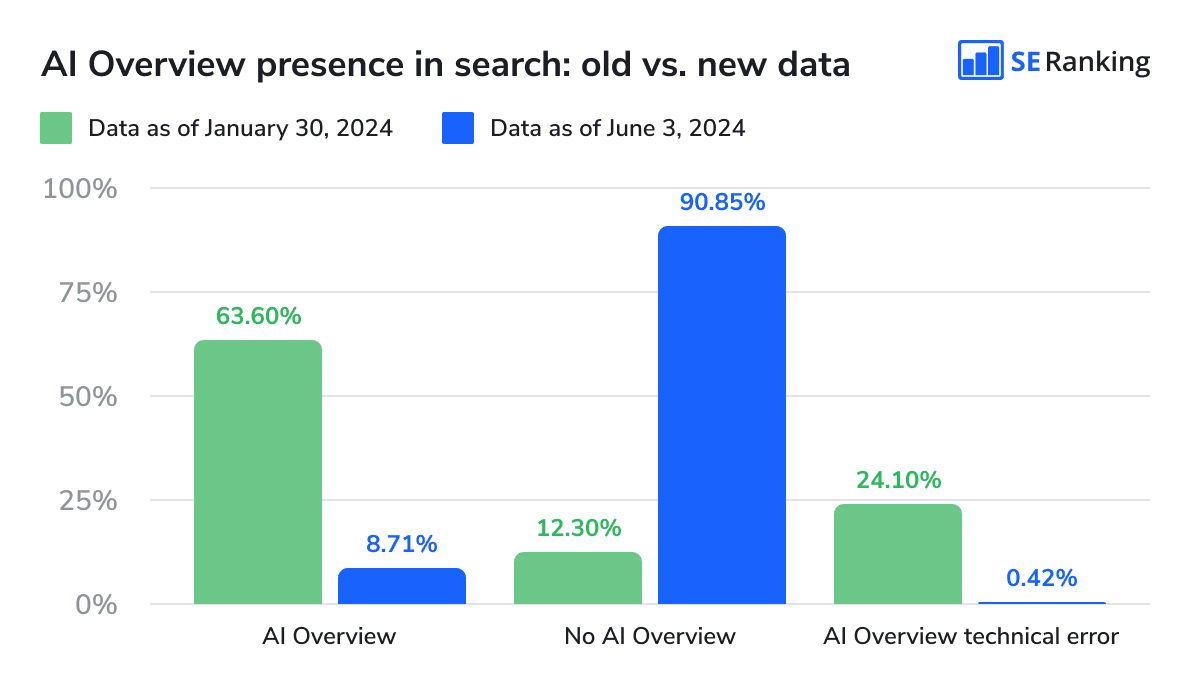
The Role of AI in the Future of SEO
AI-powered content generation tools like GPT models revolutionize SEO by creating context-rich, user-focused content. For instance, dynamic product descriptions adapt to user intent, boosting engagement and conversions.
Preparing for AI-Driven Search Innovations
Leverage AI-powered A/B testing to refine user experiences. For example, dynamic CTAs optimized through machine learning boost conversions by 30%, aligning design with evolving search algorithms and user preferences.
Cross-Industry Impacts of AI on Search
AI-driven visual search transforms e-commerce by enabling image-based product discovery. Retailers integrating AI-powered tagging see 40% higher engagement, bridging search technology with customer-centric shopping experiences.
FAQ
How does AI improve search engine rankings for businesses?
AI improves search engine rankings for businesses by analyzing vast datasets to identify user intent, optimizing content with precision, automating SEO tasks, and enhancing personalization for better engagement and visibility.
What are the key AI technologies transforming search optimization?
Key AI technologies transforming search optimization include natural language processing (NLP) for understanding user intent, machine learning for dynamic ranking adjustments, and predictive analytics for forecasting search trends and behaviors.
How can AI-driven tools enhance keyword research and content strategy?
AI-driven tools enhance keyword research and content strategy by identifying high-potential keywords, analyzing search intent, predicting trends, and providing actionable insights to create relevant, engaging, and optimized content.
What role does machine learning play in understanding user intent?
Machine learning deciphers user intent by analyzing behavior patterns, contextualizing queries, and adapting to evolving preferences, ensuring search results align closely with what users are truly seeking.
How can businesses prepare for future AI advancements in search algorithms?
Businesses can prepare for future AI advancements in search algorithms by focusing on creating authoritative, user-centric content, leveraging structured data, staying updated on algorithm changes, and adopting AI-driven tools for continuous optimization and adaptability.
Conclusion
AI is not just a tool but a transformative force reshaping how businesses approach search rankings. Consider the case of a regional bank that leveraged AI-driven keyword strategies, resulting in a 65% increase in account openings within six months. This underscores the power of aligning content with user intent, a shift from traditional keyword stuffing to meaningful engagement.
A common misconception is that AI replaces human creativity. In reality, AI amplifies it, much like a skilled navigator using advanced tools to chart a better course. For example, predictive analytics can identify emerging trends, but it’s the marketer’s insight that crafts compelling narratives around those trends.
Experts emphasize the importance of semantic search and contextual relevance. As Google’s BERT model demonstrates, understanding the “why” behind a query is as critical as the “what.” This shift demands businesses to think beyond algorithms and focus on user-centric strategies.
In this evolving landscape, businesses that embrace AI as a partner, not a replacement, will thrive. By combining AI’s precision with human creativity, they can dominate rankings and create lasting connections with their audience.
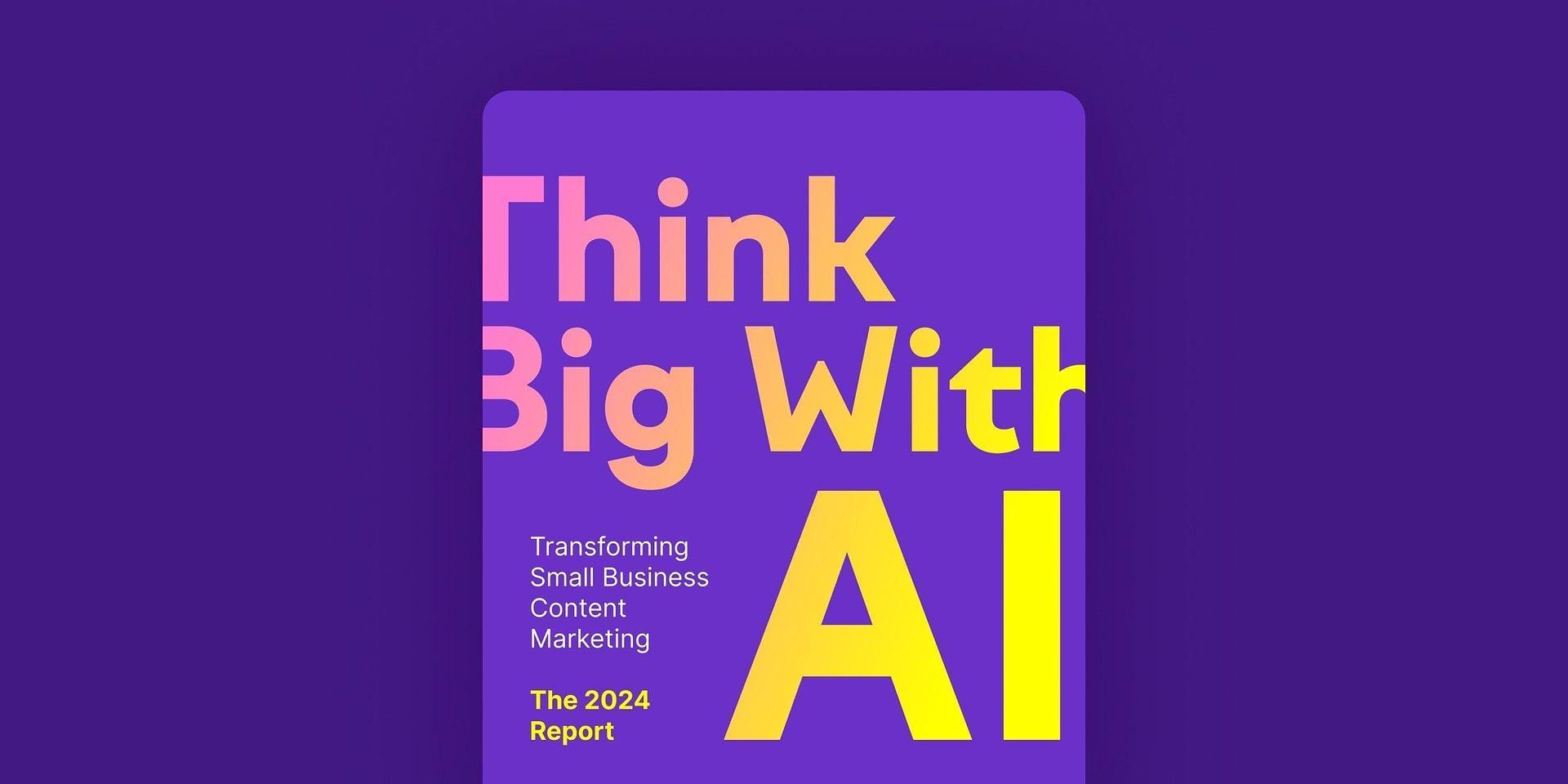
Synthesis of AI Integration Strategies
One standout strategy is real-time content adaptation. AI tools like dynamic content management systems analyze user behavior instantly, enabling businesses to tailor experiences on the fly. For instance, an e-commerce platform observing high cart abandonment rates can deploy AI to suggest personalized discounts or alternative products in real-time, significantly boosting conversions.
This approach works because it aligns with micro-moments, where users expect immediate, relevant solutions. By integrating AI-driven insights with user intent, businesses can create seamless, engaging experiences that drive loyalty.
Additionally, predictive modeling offers a proactive edge. By analyzing historical data, AI forecasts trends, such as seasonal keyword spikes, allowing marketers to prepare content strategies in advance. This not only enhances visibility but also ensures relevance during critical periods.
A lesser-known factor is the role of sentiment analysis in SEO. Monitoring user sentiment across platforms helps refine content tone and messaging, ensuring it resonates with the target audience. For example, brands can adjust their approach if sentiment shifts negatively, maintaining trust and engagement.
To implement these strategies effectively, businesses should:
- Invest in AI tools that offer real-time analytics and predictive capabilities.
- Regularly audit and adapt content based on user feedback and behavior.
- Leverage sentiment analysis to stay attuned to audience needs.
By synthesizing these strategies, businesses can not only dominate rankings but also foster deeper, more meaningful connections with their audience.
The Path Forward for AI and Search
Focusing on contextual AI-driven search intent analysis is pivotal. AI systems like Google’s Gemini now prioritize understanding nuanced user intent over traditional keyword matching, reshaping content strategies entirely.
For example, a travel website leveraging AI can predict whether a user searching “best beaches” seeks family-friendly destinations, luxury resorts, or budget options. By dynamically tailoring content to these intents, businesses can significantly enhance engagement and conversions.
This approach thrives on structured data integration, enabling AI to interpret content relevance more effectively. Schema markup, for instance, helps search engines identify key details like pricing, reviews, or availability, boosting visibility in AI-driven results.
A lesser-explored factor is cross-platform AI consistency. Ensuring content aligns across AI systems like ChatGPT, voice assistants, and search engines builds trust and authority, as users receive consistent, accurate responses.
To stay ahead, businesses should:
- Prioritize intent-driven content strategies over keyword density.
- Implement structured data to enhance AI comprehension.
- Audit content for consistency across AI platforms.
By embracing these tactics, businesses can navigate the evolving AI landscape with confidence, ensuring sustained relevance and growth.

